Brucellosis in cattle is a significant disease of man and animals caused by bacteria of the genus Brucella. It is characterized by abortion, retained placenta, and, to a lesser extent, orchitis and infection of the accessory reproductive glands in males and a subsequent high infertility rate. The disease is costly and contagious in ruminants. Another name of Brucellosis is contagious abortion or Bang’s disease.
Importance of Brucellosis in Cattle
Brucellosis is a major cause of abortion throughout the world, but the disease of cattle is almost controlled in most parts of the world. Abortion is the most obvious manifestation, and infection may also cause weak calves or stillborn, reduced milk yield, and retained placenta. In bulls, seminal vesicles, ampullae, testicles, and epididymides may be infected. Sometimes testicular abscesses may occur in bulls.
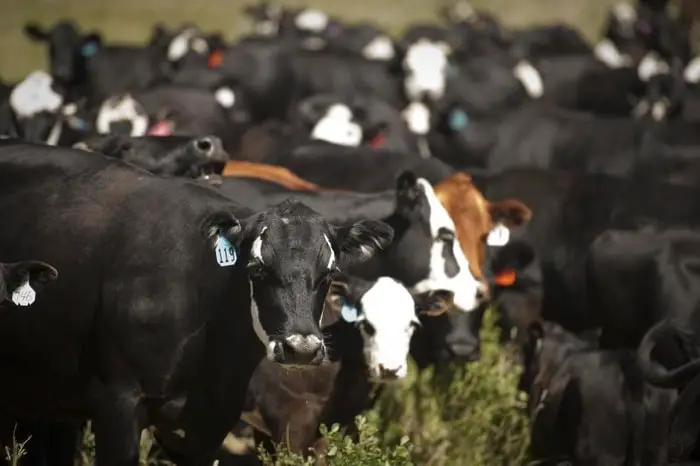
Causes of Brucellosis in Cattle
Brucellae are gram-negative coccobacilli that are nonmotile and nonencapsulated. They are aerobic, but some species require carbon dioxide for cultivation. The disease in cattle is caused almost mainly by Brucella abortus. In some countries, the disease in cattle is caused by Brucella melitensis.
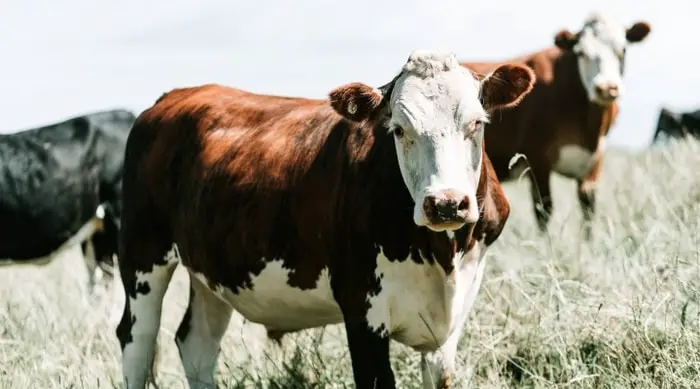
Epidemiology of Bovine Brucellosis
The disease is found in most countries in the world. It primarily affects dairy cattle, beef cattle, buffalo, bison, pigs, sheep, goats, dogs, and occasionally horses. The disease in cattle, water buffalo, and bison is caused almost exclusively by Brucella abortus; however, Brucella suis or Brucella melitensis is occasionally implicated in some cattle herds.
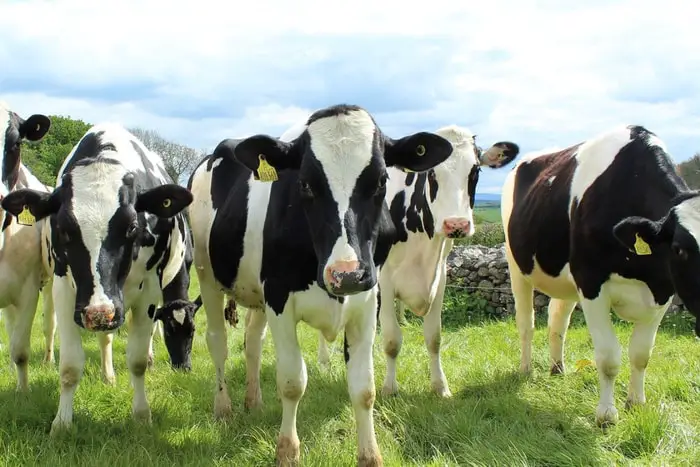
How is Brucellosis Transmitted?
As the organism achieves its highest concentration in the pregnant uterus contents, the fetus and fetal products must be considered significant sources of infection. Infection is spread mainly by ingestion, contamination of udder during milking, and the intact skin and conjunctiva. It would appear that mechanical transmission of infection from an infected bull to an uninfected cow rarely or never occurs. Still, seminal fluid from an infected bull is used for artificial insemination can able to transmit.
Brucellosis is commonly transmitted to respective animals by direct touch with infected animals or with utensils that have been contaminated with discharges from infected animals. Aborted fetuses, placental membranes or fluids, and other reproductive organ discharge present after an infected animal has aborted or calves are all highly contaminated with infectious Brucella organisms. Cows may lick those materials or the genital area of other cows or ingest the disease-causing organisms with contaminated food or water.
Symptoms of Brucellosis in Cattle
The most common and significant clinical signs of Brucellosis in cows are:
- Abortions frequently occur after the fifth month of pregnancy is the cardinal clinical feature of the disease.
- Retained placenta and metritis are common sequelae to abortion.
- After recovery, most cows usually carry their subsequent calves, but a few cows abort two or three times.
- Occasionally, the fetus may bear alive, but most are weak and pre-mature and die within a few hours.
- A high percentage of cattle have permanent udder infection with the shedding of organisms in the milk.
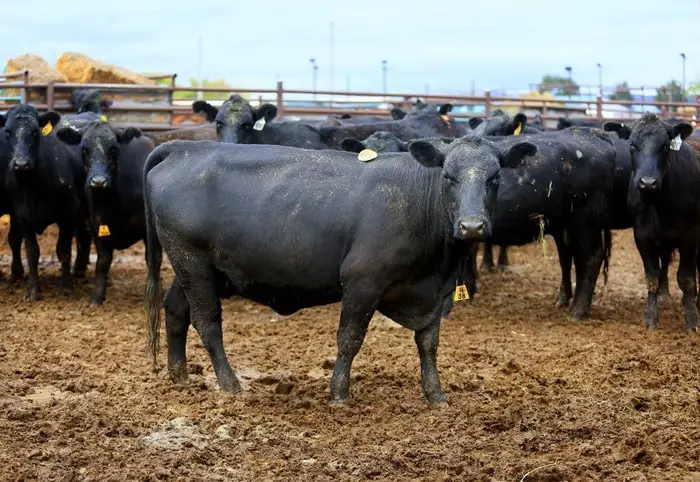
The cardinal and general clinical manifestations in the bull are:
- Br. abortus may produce orchitis with abscesses, epididymitis, and inflammation of accessory reproductive organs.
- The orchitis is usually unilateral and results in reduced libido and impaired fertility.
- Brucellae may be discharged in the seminal fluids.
How is Bovine Brucellosis Diagnosed?
Diagnosis can be made on history, epidemiology, necropsy, serology, and bacteriological examination.
History of Brucellosis includes:
- Introduction of cattle from the infected herd.
- Multiple abortions at advanced pregnancy.
- Previous occurrence within the farm.
Clinical examination of Brucellosis is:
- Abortion.
- Sterility.
- Retention of the placenta.
- Orchitis and epididymitis in the bull.
- Asymptomatic in non-pregnant females.
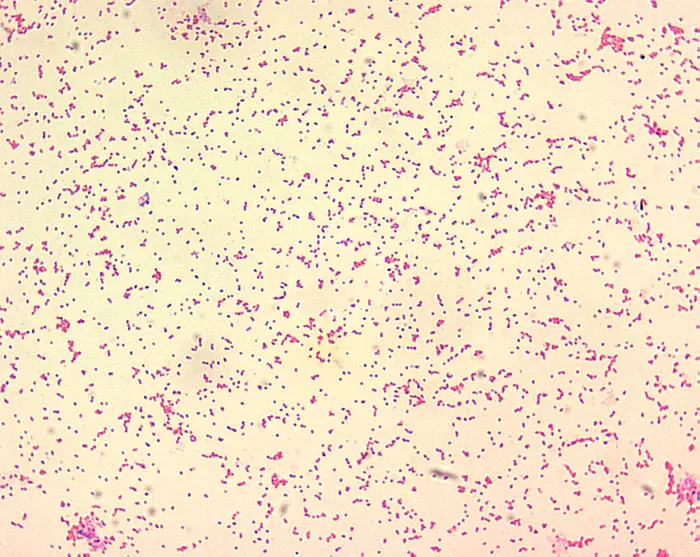
Necropsy findings are:
- No significance in diagnosis.
- Necrotizing placentitis and disseminated inflammatory reactions in aborted fetal tissues are characteristic changes.
- Granulomatous lesions and focal necrosis in several organs
Isolation and identification of the Brucella organisms:
- The sample should be collected from the abomasum or lung of a freshly aboard fetus, placenta, or uterine discharges.
- Milk or infected cow also is a good source of organisms.
- Smears prepared from placental attachments, fetal abomasum, or uterine discharge and stained with modified acid-fast technique may reveal the presence of numerous typical Brucella.
- The most satisfactory method of isolating Brucella organisms is by direct injection into appropriate solid media.
- Inoculate the samples on media and incubate at 37° C under 5 to 10% Carbon dioxide condition for 5-7 days.
- Characteristic colony-raised convex, circular outline, transparent, smooth surface, and slow-growing, gram-negative coccobacilli or short rods.
- Tentative identification-oxidase and urease tests are positive and prove agglutinating test with monospecific antisera.
Serological methods of diagnosis are:
Positive results from serologic tests indicate present or past exposure to an antigenic stimulus and can not always be equated with infection. Serologic tests to detect specific antibody in blood, serum, milk, vaginal mucus, or seminal plasma:
- Rose Bengal Test.
- Rapid Plate Test.
- Tube Agglutination test.
- Complement fixation test (CFT).
- Enzyme-linked immunosorbent assay (ELISA).
Your experts usually confirm a diagnosis of Brucellosis by testing blood or bone marrow for the brucella organism or by testing blood for antibodies to the bacteria.
Brucellosis Treatment in Cattle
Brucellae are intracellular organisms and in this environment are not antigenic and are protected from host defenses and chemotherapy. No satisfactory treatment for Brucellosis in domestic animals has been discovered. It is controlled by official vaccination and entire herd testing with the slaughter of reactors. Spontaneous recoveries occur among all species, and the percentage varies. Chlortetracycline, streptomycin, chloramphenicol have been tried with variable results.
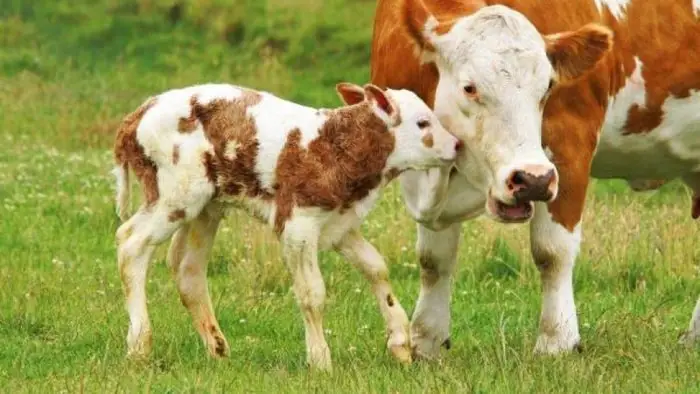
How do you Prevent and Control Brucellosis in Cattle?
Test and slaughter of the reservoir of infection and the herd must be tested at regular intervals. Quarantine for imported cattle. Proper disposal of aborted fetuses, placenta, and uterine discharges. Disinfection of contaminated areas. For the best results, application the strain 19 vaccines of Brucella abortus in young female calves age 3-8 months.

Public Health Importance of Brucellosis
Brucellosis is a true zoonosis, Brucella melitensis is considered the most virulent for humans, followed by Brucella suis and Brucella abortus in that order. Direct contacts with contaminated fluids and tissues are the primary sources of infection. Ingestion of contaminated and unpasteurized dairy products is a severe public health problem where Brucella melitensis is prevalent. The classic symptoms are:
- Headache.
- Undulating fever.
- Joints pains.
- Chills.
- Weakness.
- The most common beings are undulating or intermittent fever, with night sweats and chills, muscles, joint pain, marked asthenia, and anorexia.
Economic Losses of the Farm By Brucellosis
The significant economic losses of dairy and beef cattle farms are as follows:
- Abortion.
- Temporary or occasionally permanent sterility.
- Decreased milk yield.
- Zoonotic importance.
- Sale and replacement of diseased cattle.
Final Advice on Brucellosis in Cattle
Brucellosis is the silent killer on your farm. The disease causes significant economic loss and remains on the farm for years after year. The bulls are most dangerous as they are an asymptomatic carrier of the organism. The bulls can transmit the organism through seminal fluids to many cows. In cows, the significant economic loss is abortion, loss of production, retention, and the cows’ permanent sterility. In my article, I have tried to give almost all information related to Brucellosis in cattle. As a farm owner or academician, you will be benefited from the article.